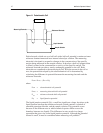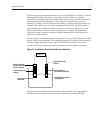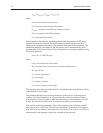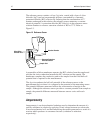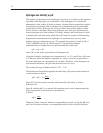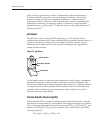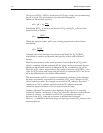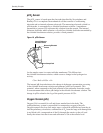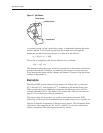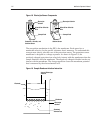
IĆ10 800 Series Operator's Manual
The levels of HCO
3
–
, H
2
CO
3
, and dissolved CO
2
play a major role in maintaining
the pH in blood. This relationship is best described through the
Henderson-Hasselbalch equation:
pH + pKĂ ) logĂ
base
acid
Substituting HCO
3
–
as the base and dissolved CO
2
and H
2
CO
3
as the acid, the
equation reads as follows:
pH TĂ
HCO
3
ć
H
2
CO
3
)ĂCO
2
Ă
Taking the equation further, pH is seen as being proportional to the acid-base
relationship:
pH TĂ
HCO
3
ć
H
2
CO
3
Ă
Although other acids and bases are present in the blood, the H
2
CO
3
/HCO
3
–
relationship is sensitive and dynamic and typically reflects other acid-base
changes.
When the measurement of the partial pressure of carbon dioxide (pCO
2
) in the
blood is combined with the measured pH, the values can be incorporated into the
Henderson-Hasselbalch equation to determine HCO
3
–
in addition to the ctCO
2
.
Since the pCO
2
value is proportional to the content of dissolved CO
2
/HCO
3
–
, the
value for pCO
2
can be used along with pH not only to calculate HCO
3
–
but also to
aid in the differentiation of acid-base abnormalities.
The measurement of pCO
2
is essential in determining ventilatory status. Because
the lungs are primarily responsible for controlling pCO
2
levels, changes in pCO
2
reflect respiratory status. For example, an increase in CO
2
indicates decreased
ventilation as CO
2
is retained, and a decrease in CO
2
indicates increased
ventilation (hyperventilation) as CO
2
is expired from the lungs.
Together, pH and pCO
2
provide a more definitive diagnostic tool in assessing
respiratory function. An increase in the pCO
2
value and a decrease in pH indicates
respiratory acidosis—a condition in which CO
2
is retained by the lungs. A
decrease in the pCO
2
value and an increase in pH indicates respiratory
alkalosis—a condition in which the lungs are expiring too much CO
2
relative to the
amount produced.



